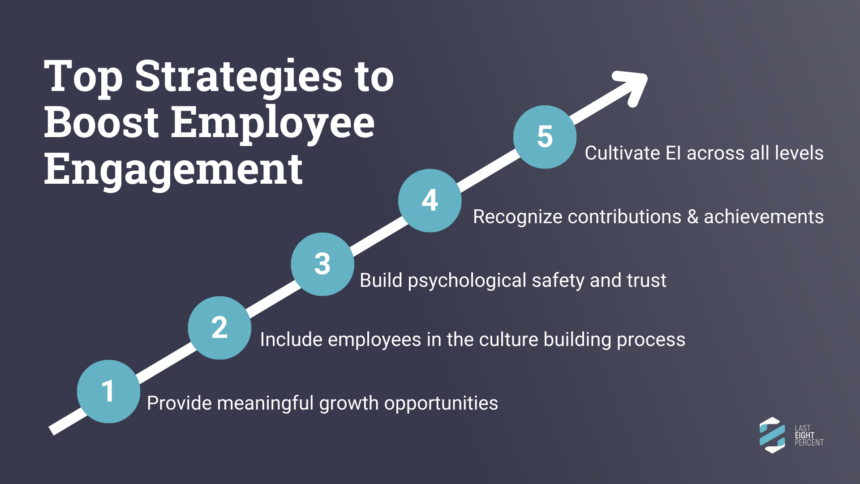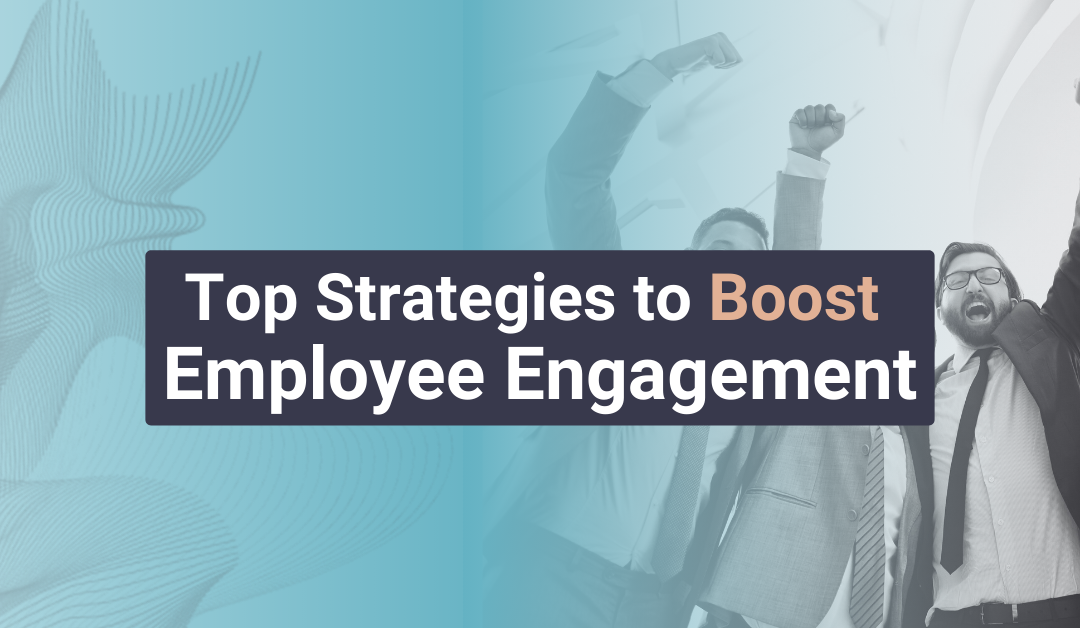Employee engagement is a concept that should be well-known to all leaders – it is a factor that can make or break the effectiveness, cohesion, and collaborative efforts of a team. Engaged teams display initiative and pride in their work that helps the organization reach new heights, while an unengaged team won’t produce innovative ideas or work that moves the needle.
Unengaged employees are simply there to do enough to get by, and this negatively impacts overall team performance – organizations need to understand how vital and urgent it is to address employee engagement and ensure it thrives on their teams. The increasingly competitive business landscape of 2024 has shown us that a focus on employee engagement is more important than ever for fostering a high-performing culture that retains top talent.
What is Employee Engagement, and Why Care?
Employee engagement is the measure of how emotionally committed employees are to their work and workplace – it involves the feelings of pride and appreciation someone has for the organization they are a part of.
According to Gallup, a staggering 85% of employees are not engaged in the workplace, and this low employee engagement costs companies $450-500 billion each year. On the contrary, organizations with higher levels of employee engagement see a 78% reduction in absenteeism, a 51% reduction in turnover rates, and a 23% increase in profitability. The highest performing organizations are those that have highly connected, courageous, and engaged teams – employee engagement in the current business landscape plagued by a constant war for talent is essential to rise to the top of the competition.

How to Boost Employee Engagement
We’ve compiled a list of useful strategies that leverage the principles of Emotional Intelligence (EI), effective leadership, and cultural transformation to boost employee engagement across an organization.
- Provide Meaningful Growth Opportunities
High performing individuals seek environments that offer growth, challenge, and meaningful work. If an organization does not provide their employees with opportunities to grow, innovate, and contribute, their people will become disengaged and search elsewhere for a team that can provide them with the dynamic and opportunity-rich landscape that they thrive in. In other words, if an organization is not providing their people with exciting and challenging work, they will become bored and uninspired and will look for more engaging opportunities. Leaders can provide growth opportunities by having regular and open communication with their employees to understand their unique needs, providing training for skill development (such as soft skills like emotional intelligence), and motivating employees to reach larger business goals through incentive programs.
- Include Employees in the Culture Building Process
Leaders play a pivotal role in shaping and sustaining the culture within their teams, and this includes their ability to keep their people engaged. Empowering leaders to model and own the desired culture on their team and have their people actively be a part of the process can have a transformative effect. When it comes to engaging employees in the culture transformation process, leaders can ask for feedback and thoughts from individual contributors, consult their team on where they feel efforts should be focused, and encourage team members to share ideas.
- Build Psychological Safety and Trust
Establishing a workplace where employees feel safe to express ideas, take risks, and admit mistakes without fear of judgment – what is referred to as psychological safety –is crucial for fostering the innovation and engagement that is required for growth. According to Harvard Business Review, leaders who enable psychological safety on their teams see better decision-making, innovation, and relationships from their team members. If an employee feels psychologically safe to voice their ideas and feedback, they will be engaged and invested in the journey to high performance. Embedding psychological safety into teams can be achieved by offering supportive feedback, encouraging collaborative problem-solving, naming inconvenient truths, and welcoming open communication.
- Recognize Contributions and Achievements
In our study of over 20,000 respondents, 20.8% of individuals who participated indicated that the number one reason they would leave their job is due to a lack of recognition. When employees don’t feel that their contributions are valued and their achievements go unnoticed, engagement levels suffer and turnover rates rise. When leaders take time to acknowledge the efforts and successes of their team members, it fosters a highly connected culture where individuals feel proud to be a part of the team. For instance, appreciation can come in the form of informal recognition in team meetings to even formal awards.
- Cultivate Emotional Intelligence Across All Levels
Emotional Intelligence is essential in today’s workplace environment, and among its wide-ranging applications is the improvement of employee engagement. EI enables individuals to manage their own emotions and understand the emotions of others, fostering better communication and collaboration across teams. Notably, emotional intelligence allows leaders and team members to better connect with one another and facilitate more effective interactions and problem-solving.
Organizations can enhance EI by providing training that focuses on self-awareness, emotional regulation, and empathy, and employing learned principles into their operations. Leaders who possess higher emotional intelligence positively impact their employee’s growth, overall effectiveness at work, and ability to contribute creatively. Integrating emotional intelligence into an organization is a foundational step that not only improves interpersonal relations but also enhances overall team dynamics that further increases engagement.

Conclusion
By implementing these strategies, organizations can create a dynamic and engaged workforce prepared to meet today’s challenges and drive future success. Focusing on emotional intelligence and cultural empowerment turns every interaction into an opportunity for growth and innovation, leading to a resilient, high performing organization where everyone feels engaged, valued, and invested in collective success.
Is your organization feeling the effects of employee disengagement? Get in touch with one of our Learning Consultants and learn how IHHP can help you build a highly connected and engaged organizational culture.

